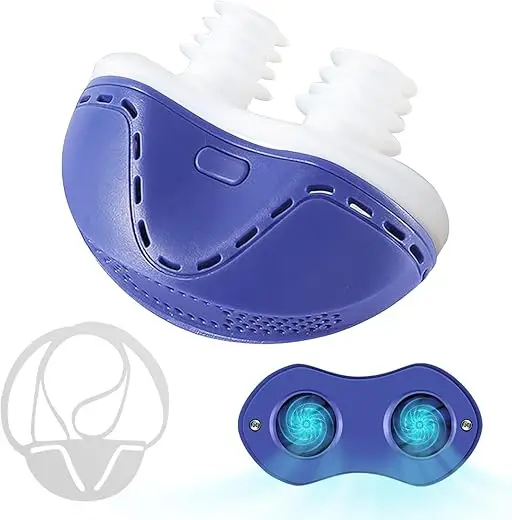Unlock the Full Potential of Your CPAP Machine
Did you know that nearly 50% of CPAP users don’t optimize their machine settings? This oversight can lead to restless nights and hinder your health. In this guide, you’ll learn how to fine-tune your CPAP pressure settings for improved sleep quality and overall well-being. Let’s get started!
What You’ll Need to Get Started
Understand Your CPAP Machine
Why Knowing Your Device is Crucial for Better SleepFamiliarize yourself with the features and settings of your CPAP machine. Knowledge is power in your sleep therapy journey.
- Read the Manual: Start by thoroughly reading your machine’s user manual. This document contains vital specifics about your device’s capabilities, settings, and maintenance tips.
- Explore Control Settings: Navigate through the settings menu. Check parameters such as pressure levels, ramp time, and humidification options. For example, if you struggle with dryness, adjusting the humidity setting can enhance comfort.
- Learn About Your Pressure Levels: Understand what your prescribed pressure levels mean. If your doctor recommends a range, familiarize yourself with the implications of each setting. High pressure can feel uncomfortable, while low pressure may not adequately treat sleep apnea.
- Identify Key Features: Explore special features like Auto CPAP or BiPAP modes. These can automatically adjust pressure based on your breathing, which may lead to a more restful night.
By understanding your CPAP machine, you can make informed adjustments that enhance your therapy experience.
Consult with Your Sleep Specialist
The Expert Insights You Can't Afford to IgnoreSchedule an appointment with your sleep specialist before making any changes to your CPAP pressure settings. Their expertise is crucial for ensuring safe and effective adjustments tailored to your individual needs.
- Discuss Current Settings: Bring your CPAP data and any notes on your sleep patterns to your consultation. Share how you’ve felt on your current pressure settings. For instance, you might say, “I wake up a few times during the night, and I feel more tired than usual.”
- Ask Specific Questions: Inquire about any potential risks associated with changing your pressure settings. For example, you can ask, “Is it safe to lower my pressure if I’m feeling more tired?”
- Listen for Recommendations: Your specialist might suggest gradual adjustments rather than a sudden increase or decrease. They might say, “Let’s reduce your pressure by 1 cmH2O and evaluate how you feel after a week.”
- Document Guidance: Take notes during your appointment. This helps you remember specific recommendations and serves as a reference for future discussions.
By establishing open communication with your sleep specialist, you’ll create a personalized plan that fosters better sleep health.
Track Your Sleep Patterns
The Surprising Data That Can Transform Your TherapyKeep a sleep diary or use a sleep tracking app to monitor your sleep quality and patterns consistently. This step is crucial, as it enables you to identify trends and assess the effects of any pressure adjustments on your overall rest.
- Start Your Sleep Diary: Write down your sleep times, wake times, and how you feel in the morning. For example, note details like, “Fell asleep at 10 PM, woke up at 6 AM, felt refreshed” or “Tossed and turned from 2 AM to 4 AM.”
- Utilize Technology: Download a sleep tracking app on your smartphone. Apps like Sleep Cycle or Snuzai not only track your sleep duration but also analyze patterns over time.
- Look for Patterns: Regularly review your entries. Are there nights when you feel more rested? For instance, you might discover that on days with lower pressure settings, you sleep sounder, indicating a possible adjustment is needed.
- Share Your Data: Present your sleep patterns to your sleep specialist during follow-up visits. This information will help them make informed recommendations regarding your CPAP settings and overall sleep strategy.
By diligently tracking your sleep patterns, you empower yourself to make data-driven decisions that could lead to improved sleep quality.
Gradually Adjust Your Pressure Settings
Dare to Experiment: Small Changes, Big ResultsMake incremental adjustments to your CPAP pressure, typically in 1-2 cm H2O increments. This gradual approach helps you find the optimal setting without compromising comfort or safety.
- Choose Your Starting Pressure: Begin with your current pressure level as your baseline. For instance, if your prescribed level is 10 cm H2O, you’ll either want to increase slightly or decrease, depending on your recent experiences.
- Make Small Changes: Adjust your pressure slowly, focusing on increments of just 1-2 cm H2O. For example, if you’re at 10 cm H2O and plan to adjust downwards, change it to 9 or 8 cm H2O to start.
- Trial Period: Allow a week at each new setting to gather enough data on how you feel. Keep your sleep diary updated; jot down notes on how well you sleep and any symptoms you experience.
- Evaluate Comfort: Assess how each adjustment impacts both your sleep quality and comfort. If you feel less restless or wake up more refreshed, you may be closer to your optimal pressure.
- Consult Regularly: After a couple of adjustments, reconnect with your sleep specialist to discuss your experiences. They can provide insights and recommend further tweaks if necessary.
By taking it slow, you prioritize your comfort while navigating your therapy adjustments effectively.
Monitor and Evaluate Your Progress
Are You Ready to Celebrate Improved Sleep?Regularly assess your sleep quality and comfort following your pressure adjustments. This crucial step ensures that your CPAP therapy is effective and that you’re on the right track to better sleep.
- Set Check-In Dates: Determine specific times—weekly or bi-weekly—to review your sleep data from your diary or app. For example, plan to check in every Sunday night to reflect on your week’s sleep experience.
- Conduct Sleep Studies: If possible, schedule a follow-up sleep study, either at a sleep lab or through a home monitoring device. This will provide detailed insights into your sleep apnea severity with the new pressure settings.
- Evaluate Sleep Quality: Ask yourself questions like: “Am I waking up less frequently?” or “Do I feel more rested in the morning?” Compare your current subjective feelings against previous records for clarity.
- Identify Changes: Look for improvements or recurring issues. Perhaps after adjusting your pressure to 9 cm H2O, you notice fewer awakenings, which indicates you’re on the right path.
- Create Feedback Loops: Share your findings with your sleep specialist. They can recommend further tweaks based on your observations, ensuring continuous optimization of your CPAP therapy.
By systematically monitoring and evaluating your progress, you enhance the effectiveness of your CPAP therapy and make informed decisions toward better sleep health.
Embrace the Journey to Better Sleep
By optimizing your CPAP pressure, you pave the way for restful nights and rejuvenating days. As you refine your settings and monitor your progress, remember that better sleep enhances your overall well-being. Are you ready to take the next step towards a healthier, more restful life?










I loved the section about embracing the journey! We need to celebrate the small wins in our sleep improvement. 🎉
Yes! It’s so easy to get frustrated, but recognizing progress is key!
Absolutely, Jake! Every step counts, and a positive mindset makes a huge difference!
Anyone else feel like their CPAP is just a fancy paperweight? I can’t seem to get used to it. 😩
I felt that way too at first! Stick with it and give it time.
You’re not alone, Kevin! Many users feel that way at first. Keep at it, and maybe try adjusting the settings!
I’ve been hesitant about adjusting my CPAP pressure. What if I mess it up? 😬
I was nervous too, but I just made small adjustments, and it worked out fine!
Totally understandable, Grace. Just take it slow and consult your specialist if you feel uncertain!
I always thought adjusting the pressure would be complicated. This guide made it seem easier! Just need to muster up the courage to actually do it! 😅
You’ve got this, Mia! Just take it step by step.
It really is easier than it sounds! Just take it slow and you’ll be fine!
I didn’t realize I should consult a sleep specialist. I just had my primary doctor prescribe it. Anyone else?
Same here! I thought my doctor was all I needed. Time for a specialist, I guess!
That’s pretty common, Liam! Specialists can provide tailored advice that might help you more!
This guide is honestly a lifesaver! Totally changed my approach to using my CPAP. I actually feel more rested now! ☀️
That’s awesome! What changes did you make that helped the most?
So happy to hear that, Ava! It’s all about finding what works for you.
This might be the most boring topic ever but I guess it’s important…? 🙄 I mean, who wants to talk about sleep machines, right? But I’ll give it a shot!
Boring topics often lead to the best results! Sleep is important, Tommy!
Haha I get it! But trust me, once you get it right, it’s like magic for your sleep!
I’m curious about the gradual pressure adjustments. How do you know when to increase it? Is it based on how you feel or do you need to consult with someone? 🤔
I had the same confusion. I started adjusting mine based on my sleep quality and it worked well!
Great question, Emily! It’s usually a mix of both. You can adjust based on comfort, but it’s best to check in with your sleep specialist too.
Wow, this guide is super helpful! I didn’t even know where to start with my CPAP machine. I’ve been using it for a year but never thought to track my sleep patterns. Gonna start tonight! 😴💤
Glad to hear you found it helpful, Samantha! Tracking your sleep can really show you how effective the CPAP is for you.
Same here! I just thought I was supposed to wear it and that was it. Tracking seems like a game changer! Let us know how it goes! 😄
Tracking my sleep patterns sounds like an extra chore… Do you really think it helps?
Definitely! It’s so worth it. You might be surprised by what you find!
Yes, Oliver! It helps you identify patterns and see if your CPAP is working as it should.